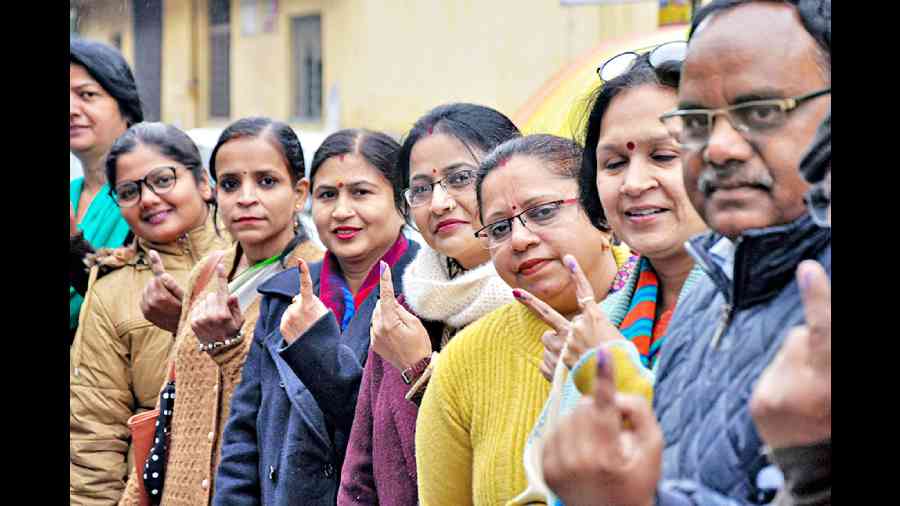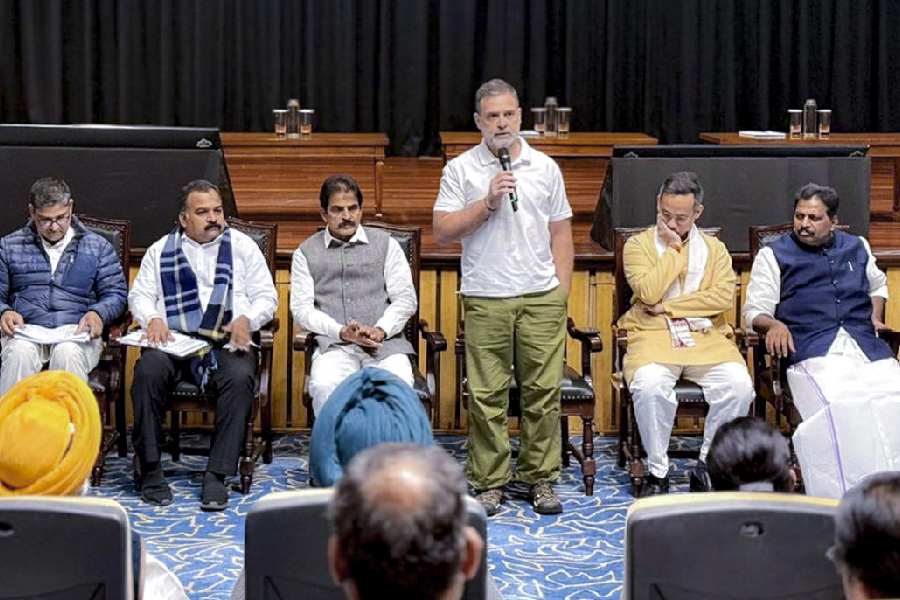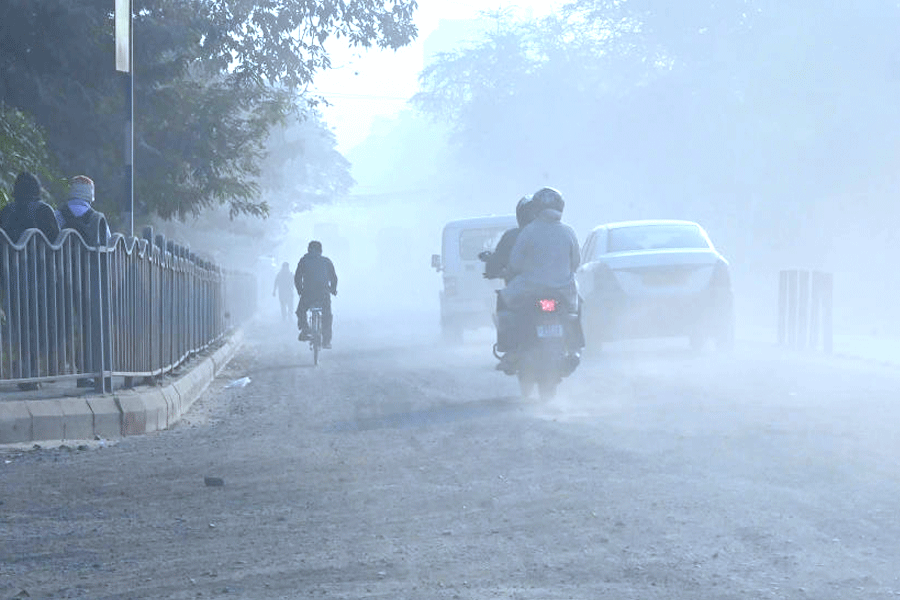The Government of India introduced a new official theme, ‘India: the Mother of Democracy’, to commemorate Constitution Day on November 22, 2022. According to the official circular issued by the ministry of education, academic and educational institutions were directed to undertake activities such as the collective readings of the Preamble to the Constitution and organising webinars, seminars and quiz competitions on this theme. A Concept Note prepared by the Indian Council of Historical Research in English, Bharat: Loktantra ki Janani, was also circulated with this official order to provide a broad overview of this new thematic concern. The ICHR later published an edited volume titled India: the Mother of Democracy as a reference book in this regard.
This initiative was widely publicised. The prime minister, Narendra Modi, also used the expression, ‘Mother of Democracy’, in his Mann ki Baat radio programme. He said: “… we Indians are also proud of the fact that our country is also the Mother of Democracy. Democracy is in our veins; it is in our culture — it has been an integral part of our work for centuries. By nature, we are a Democratic Society. Dr Ambedkar had compared the Buddhist monks’ union to the Indian Parliament… Babasaheb believed that Lord Buddha must have got inspiration from the political systems of that time.”
It is worth noting that the Concept Note prepared by the ICHR does not have any direct reference to Buddhism or to B.R. Ambedkar. Instead, it addresses the Indian tradition of democracy as a reflection of Hindu political theory. This one-sided representation of Indian political traditions was criticised by a few scholars. It is argued that the Concept Note is based on the Hindutva framework of history and it aims to establish the Rashtriya Swayamsevak Sangh’s perception of India’s past. It is also argued that the Concept Note ignores the alternative historical traditions and does not encourage critical thinking.
There is certainly merit in this kind of criticism. However, I do not think that the Concept Note should be rejected entirely as a political pamphlet of some kind. The Note opens up the possibilities of rethinking those historical foundations that led to the success of democracy in India. At the same time, it asks us to pay close attention to the grassroots cultures and subaltern imaginations so as to capture the ethos of democracy in the Indian context. There is a need to engage with this Concept Note intellectually precisely for this reason.
The Concept Note makes two broad claims. It begins with a clear and straightforward question of translation. Comparing a few popular Hindi expressions, an attempt is made to extract the context-specific meanings of democracy. It says: “A distinction needs to be drawn between Praja-Tantra, Jana-Tantra, and Loka-Tantra. One is a straight translation of the political system known as ‘Democracy’, the second is ‘People versus the ruler(s) oriented system’, and the third is ‘a community-system oriented towards the welfare of the community’.”
In order to establish Loka-Tantra as an Indian version of democracy or the people’s polity, the Note describes three universally accepted features: “(i) limits on the Ruler(s)”; “(ii) accountability of the Ruler(s)”; “(iii) people’s direct or indirect partition in governance and/or their rights of self-governance”. These three features, it is argued, correspond to Loka-Tantra in a historical sense and paved the way for what is called the Indian form of governance. It is claimed: “In India, from the Vedic times itself, two kinds of states, Janapada and Rajya, have been in the existence. The Indian experience evolved its own form of governance at the levels of the village and the central polity: (i) the federal/central political structures were delinked from the life of the community (village communities), and consequently (ii) village communities became self-governing and autonomous, and (iii) developed a hierarchy of self-governing institutions, such as panchayat and khaps, that enabled them to remain unaffected by and large by the changing kingdoms/empires particularly those of the invaders hostile to Hindu culture.”
The framing of this intellectual claim is conceptually problematic. It begins with the premise that the idea of democracy needs to be historicised. This historicisation, however, is not taken as any kind of theoretical challenge. The three identified features of democracy are presented to us as universally accepted, ahistorical/apolitical attributes. The Note does not tell how the presence of self-governing institutions ensured the first two features of democracy in the Indian context, namely the limits on the ruler, and his/her accountability.
At the same time, the Note fails to clarify the crucial distinction between democracy and governance. We are left with a few puzzling questions: if Janapada and Rajya were delinked from each other, what was the relationship between the self-governing, grassroots, subaltern institutions and the central polity? What is the significance of the term, hostile invaders, in this framework? Does it mean that the desecration of Hindu temples by non-Hindu invaders was a political act that was directly related to the Rajyas, not the Janapadas?
Instead of clarifying such issues, the Concept Note makes a second powerful claim: “… This explains the survival of Hindu culture and civilisation in the face of 2000 years of invasions by alien ethnicities and cultures. This became possible because the Hindu mind from the beginning addressed the central question of how to wield this vast multiplicity that is India into a single larger community and from ancient times a geo-cultural definition has been given to this entity, Rashtra, Bharata — The country which lies to the south of the Himalayas and the north of the ocean is called Bharata and the Bhartiyas are the people of this country.”
This statement goes against the very logic of historicisation. The Note wants us to believe that terms like ‘Hindu mind’, ‘Bharat’ and ‘Bhartiyata’ have been static and unchangeable for over 2,000 years. This historical reductionism is evoked to justify the territory-centric imaginations of the Hindu nation and its political organisation. An impression is created that the Hindu, and for that matter, non-Hindu, constitutes the prime contradiction in the Indian past and present: Hindus are democratic by nature (even if they belong to Rajya); hence, they are the parents of democracy. Non-Hindus, on the other hand, can be legitimately called invaders or anti-democratic (even if they are intermingled culturally in the realms of Janapada/Panchayat); hence, there is no need to study them.
This intellectual inconsistency, I argue, needs to be addressed in its entirety. After all, the success of democracy in India is a political question that can only be answered politically and, of course, democratically.
Hilal Ahmed is Associate Professor, CSDC, New Delhi










